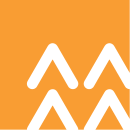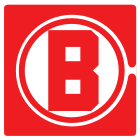
K Wah International Holdings Ltd
HKEX:173


Utilize notes to systematically review your investment decisions. By reflecting on past outcomes, you can discern effective strategies and identify those that underperformed. This continuous feedback loop enables you to adapt and refine your approach, optimizing for future success.
Each note serves as a learning point, offering insights into your decision-making processes. Over time, you'll accumulate a personalized database of knowledge, enhancing your ability to make informed decisions quickly and effectively.
With a comprehensive record of your investment history at your fingertips, you can compare current opportunities against past experiences. This not only bolsters your confidence but also ensures that each decision is grounded in a well-documented rationale.
Do you really want to delete this note?
This action cannot be undone.

| 52 Week Range |
1.63
2.47
|
| Price Target |
|
We'll email you a reminder when the closing price reaches HKD.
Choose the stock you wish to monitor with a price alert.
This alert will be permanently deleted.
Profitability Summary
K Wah International Holdings Ltd's profitability score is 43/100. We take all the information about a company's profitability (such as its margins, capital efficiency, free cash flow generating ability, and more) and consolidate it into one single number - the profitability score. The higher the profitability score, the more profitable the company is.

Score
We take all the information about a company's profitability (such as its margins, capital efficiency, free cash flow generating ability, and more) and consolidate it into one single number - the profitability score. The higher the profitability score, the more profitable the company is.
We take all the information about a company's profitability (such as its margins, capital efficiency, free cash flow generating ability, and more) and consolidate it into one single number - the profitability score. The higher the profitability score, the more profitable the company is.

Score

Score
Margins
Earnings Waterfall
K Wah International Holdings Ltd

Margins Comparison
K Wah International Holdings Ltd Competitors

| Country | Company | Market Cap |
Gross Margin |
Operating Margin |
Net Margin |
||
|---|---|---|---|---|---|---|---|
| HK |

|
K Wah International Holdings Ltd
HKEX:173
|
6.8B HKD |
Loading...
|
Loading...
|
Loading...
|
|
| HK |

|
China Resources Land Ltd
HKEX:1109
|
211.4B HKD |
Loading...
|
Loading...
|
Loading...
|
|
| HK |

|
CK Asset Holdings Ltd
HKEX:1113
|
151.7B HKD |
Loading...
|
Loading...
|
Loading...
|
|
| HK |

|
Henderson Land Development Co Ltd
HKEX:12
|
150.7B HKD |
Loading...
|
Loading...
|
Loading...
|
|
| VN |
V
|
Vinhomes JSC
VN:VHM
|
500.3T VND |
Loading...
|
Loading...
|
Loading...
|
|
| HK |

|
China Overseas Land & Investment Ltd
HKEX:688
|
148.6B HKD |
Loading...
|
Loading...
|
Loading...
|
|
| HK |

|
Sino Land Co Ltd
HKEX:83
|
103.3B HKD |
Loading...
|
Loading...
|
Loading...
|
|
| CN |

|
China Merchants Shekou Industrial Zone Holdings Co Ltd
SZSE:001979
|
89.5B CNY |
Loading...
|
Loading...
|
Loading...
|
|
| CN |

|
Poly Developments and Holdings Group Co Ltd
SSE:600048
|
78.2B CNY |
Loading...
|
Loading...
|
Loading...
|
|
| IN |

|
Macrotech Developers Ltd
NSE:LODHA
|
977.3B INR |
Loading...
|
Loading...
|
Loading...
|
|
| CN |

|
Longfor Group Holdings Ltd
HKEX:960
|
67.6B HKD |
Loading...
|
Loading...
|
Loading...
|
Return on Capital
Return on Capital Comparison
K Wah International Holdings Ltd Competitors

| Country | Company | Market Cap | ROE | ROA | ROCE | ROIC | ||
|---|---|---|---|---|---|---|---|---|
| HK |

|
K Wah International Holdings Ltd
HKEX:173
|
6.8B HKD |
Loading...
|
Loading...
|
Loading...
|
Loading...
|
|
| HK |

|
China Resources Land Ltd
HKEX:1109
|
211.4B HKD |
Loading...
|
Loading...
|
Loading...
|
Loading...
|
|
| HK |

|
CK Asset Holdings Ltd
HKEX:1113
|
151.7B HKD |
Loading...
|
Loading...
|
Loading...
|
Loading...
|
|
| HK |

|
Henderson Land Development Co Ltd
HKEX:12
|
150.7B HKD |
Loading...
|
Loading...
|
Loading...
|
Loading...
|
|
| VN |
V
|
Vinhomes JSC
VN:VHM
|
500.3T VND |
Loading...
|
Loading...
|
Loading...
|
Loading...
|
|
| HK |

|
China Overseas Land & Investment Ltd
HKEX:688
|
148.6B HKD |
Loading...
|
Loading...
|
Loading...
|
Loading...
|
|
| HK |

|
Sino Land Co Ltd
HKEX:83
|
103.3B HKD |
Loading...
|
Loading...
|
Loading...
|
Loading...
|
|
| CN |

|
China Merchants Shekou Industrial Zone Holdings Co Ltd
SZSE:001979
|
89.5B CNY |
Loading...
|
Loading...
|
Loading...
|
Loading...
|
|
| CN |

|
Poly Developments and Holdings Group Co Ltd
SSE:600048
|
78.2B CNY |
Loading...
|
Loading...
|
Loading...
|
Loading...
|
|
| IN |

|
Macrotech Developers Ltd
NSE:LODHA
|
977.3B INR |
Loading...
|
Loading...
|
Loading...
|
Loading...
|
|
| CN |

|
Longfor Group Holdings Ltd
HKEX:960
|
67.6B HKD |
Loading...
|
Loading...
|
Loading...
|
Loading...
|


